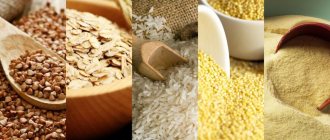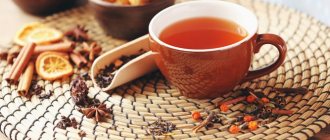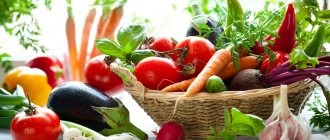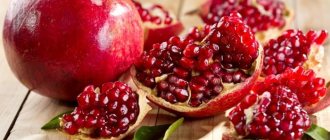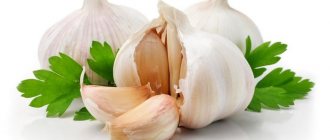Cashew nuts are a natural product that contains many useful components that are so necessary for a woman who has just given birth to restore the body. At the same time, nuts are a strong allergen; they can bring many sleepless nights to young parents. So is it possible to eat these nuts while breastfeeding? Let's figure it out.
Cashew nuts will be very useful for both a nursing mother and her baby.
Is it possible to have cashews while breastfeeding?
Walnut is good for health. The product contains the following beneficial substances:
Cashews enrich a woman’s diet with proteins of plant origin. The product provides the nursing mother with glucose, disaccharides, fructose, and starch. The nut contains: iron, potassium, sodium, phosphorus, magnesium.
The polyunsaturated fatty acids contained in cashews have a positive effect on health. They cleanse the walls of blood vessels from atherosclerotic plaques and reduce cholesterol in the blood. Polyunsaturated fatty acids help improve metabolic processes, improve memory, and increase concentration.
Cashew nuts contain many nutrients and have antioxidant properties. The product increases resistance to stress during breastfeeding. Indian nut prevents the development of cancerous tumors.
Cashews are also useful for breastfeeding due to the content of B vitamins. Such substances improve the functions of the nervous system. Eating cashew nuts while breastfeeding stabilizes blood glucose levels.
Cashews increase hemoglobin levels and improve blood clotting. Cashew nuts are endowed with pronounced antiseptic properties. The product helps increase the strength of tooth enamel during lactation.
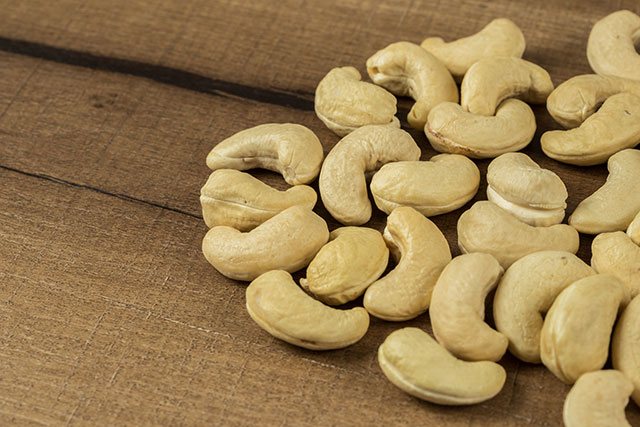
Nuts also help with sleep disorders and depression. The product contains amino acids that help improve a woman’s emotional state. It helps get rid of anxiety and irritability.
The product is also actively used for cosmetic purposes. Oil made from cashews is present in creams and nourishing face masks. A mixture of nuts and parsley has a lifting effect. It is recommended to apply it to the neck and décolleté area.
A mask with nuts helps eliminate the feeling of dry skin. When preparing a cosmetic mixture, 0.2 kg of cashews are soaked in 300 ml of cool water for 3 hours. After this, the cosmetic mixture is crushed using a blender. You need to put a little finely chopped parsley into the resulting mass. The cosmetic mass is applied to the face for 20 minutes. After this time, the mixture is washed off with sufficient water.
There is no certainty about whether cashews can be eaten while breastfeeding. If a woman has not tried Indian nut before, it is not recommended to introduce it into the diet during lactation. During this period, doctors do not recommend consuming exotic foods.
On the first day you are allowed to eat 2-3 nuts. After this, watch how the baby reacts to the new product. If your child is not allergic, you can eat large amounts of nuts.
Possible harm from eating cashews for nursing and pregnant women
A nursing mother should eat cashews with caution. Otherwise, the following negative consequences may occur:
- allergic reactions. When consuming nuts in large quantities, swelling, redness of the skin, and itching may occur;
- disorder of the digestive tract. The child may experience constipation or diarrhea;
- changes in the composition of breast milk. When you eat nuts, their taste may change. As a result, the child refuses mother's milk.
Cashews during breastfeeding in the first month
During lactation, it is not recommended to eat cashews in the first month. The immature digestive tract of a child is not able to absorb milk, which contains a large amount of nutrients. There is a high probability of dysfunction of the baby’s digestive organs. Therefore, cashews are contraindicated when feeding a newborn in the first month.
Nuts are included in the mother’s diet in the second month of lactation. At the same time, it is not recommended to add exotic seasonings to dishes with Indian nuts. It is advisable to limit the amount of spices in them to a minimum.
Cashews should be consumed with caution when breastfeeding. The product improves immunity and activates the woman’s recovery process after the birth of a child. Cashews help improve the condition of hair and teeth.
Pine nuts
Can a nursing mother eat pine nuts? Definitely yes, they are considered the least allergenic, they contain important microelements, vitamins B and E.
The product promotes speedy recovery after childbirth, destroys viruses, starts rejuvenation processes, which has a beneficial effect on the condition of the skin and curls.
Walnuts during lactation
This popular variety of nuts is allowed for nursing mothers; the ascorbic acid content in it is much higher than in citrus fruits; it increases the calorie content and fat content of milk, which should be taken into account if your baby already has problems with excess weight.
The product improves the functioning of the immune system, eliminates fatigue, prevents the development of depression, cleanses the body of toxins, and has a laxative effect.
Despite all the benefits, mothers during lactation should not overuse walnuts - due to increased viscosity, milk can begin to accumulate in the ducts, and against the background of stagnation, various pathologies of the mammary glands can occur.
But with reasonable use of this product, the likelihood of developing mastitis and lactostasis is significantly reduced. Thick liquid is difficult for the baby to drink, so he may remain hungry.
Walnuts can be consumed when the baby is 2 months old, you should start with half a kernel, the maximum permissible daily dose is 2 large kernels.
Is it possible for a nursing mother to have cashews?
Nuts during breastfeeding make mother's milk more nutritious, rich and fatty. However, this product contains a strong allergen, so it is not recommended to consume nuts if the baby is prone to allergies, as well as in the first two to three months after birth, when the baby’s body is still very weak and is just adapting to new conditions.
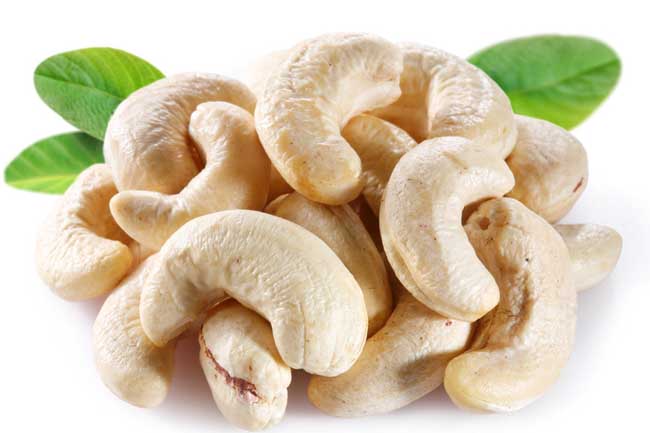
The risk of allergies and stomach upset depends on the type of nut. Walnuts and pine nuts are considered the safest, followed by almonds and cashews. But hazelnuts and peanuts contain the strongest allergens. However, in the absence of a negative reaction in the baby and if the diet is followed during breastfeeding, the mother can eat nuts, including cashews.
Precautions before use

- It is better to eat the product raw, without any impurities: salt, sugar, other seasonings;
- Under no circumstances should you eat bitter, moldy or expired nuts;
- Monitor your child’s well-being: if he or she develops a rash, redness or any other allergy symptoms, stop taking the product immediately;
- do not eat more nuts than the daily allowance - this is 8-10 nuts per day, even if the baby feels well.
Only by following all the rules can you not be afraid of a negative reaction from the child’s body.
Beneficial features
Cashews contain a large amount of vitamins and minerals that have a beneficial effect on the development and growth of an infant. The useful composition will help a woman recover faster after childbirth. The calorie content of nuts is less than 600 kcal per 100 grams; if the dosage is observed, a nursing mother should not be afraid of gaining excess weight. Cashews have a beneficial effect both on the body as a whole and on individual organs. This variety of nuts performs a number of important functions:
- Reduces the level of harmful cholesterol in the blood;
- Ensures normal material metabolism;
- Strengthens the immune system and prevents the development of diseases, viruses and infections, protects the body from dangerous bacteria;
- Stimulates brain activity;
- Participates in the formation of bone tissue;
- Strengthens teeth and gums;
- Normalizes the functioning of the kidneys and heart;
- Helps with anemia, heart and vascular diseases;
- Improves mood and relieves fatigue, helps with depression;
- Normalizes sleep;
- Prevents the appearance and development of cancerous tumors.
In addition, cashews are good for smokers, as they reduce nicotine levels in the blood. Nuts of this variety are recommended for use during severe physical activity, depressed mood and magnesium deficiency. Cashews have undoubted benefits for women, as they are responsible for reproductive function and facilitate menstruation.

Almonds: composition and properties of the product
Almonds are a stone type fruit
Almonds, from a biological point of view, are not a nut, but a seed. However, just like peanuts (legumes), pine nuts (seeds) are popularly called nuts. Almonds are valued for their rich taste and high nutritional properties. The nut is also useful for a nursing woman. By consuming almonds daily in small quantities, mother will be able to improve her health, improve metabolism, strengthen her immune system and take care of the proper functioning of internal organs and systems. Despite the high calorie content (600–650 kcal per 100 g), if consumed wisely, almonds will not have a negative effect on your figure; they are perfectly digestible and do not contribute to the formation of fat in the body. Let's list the most significant components of almonds:
B vitamins. Participate in the synthesis of amino acids, metabolism, and hematopoiesis. Vitamin E. A “female” vitamin that ensures skin elasticity, hair beauty, and is involved in the synthesis of sex hormones. Potassium. Necessary for the formation and strengthening of muscle tissue. Potassium is required for the proper functioning of the cardiovascular system. Calcium. This mineral ensures the strength of bones, joints and teeth, and is involved in the formation of muscle tissue. Magnesium. An indispensable participant in cellular metabolism. Reduces cholesterol levels and ensures the integrity of blood vessels. Iron. Required to maintain hemoglobin levels in the blood and distribute oxygen throughout the cells and tissues of the body. Manganese. Removes toxins from cells, promotes their growth and development. Participates in the formation of the thyroid hormone - thyroxine. Manganese has a positive effect on the activity of the nervous system, the condition of bone and cartilage tissue. Fatty acid. Almonds contain healthy fats - Omega-3, Omega-6, mono- and polyunsaturated
They are responsible for memory, attention, and the speed of nerve impulses. A woman needs such fats to normalize the menstrual cycle and maintain beautiful skin.
The negative effects of almonds on the body are also known. The product can provoke allergies, so you can eat it during breastfeeding in limited quantities, observing the baby’s reaction. Some varieties of almonds have a characteristic bitter taste, which is appreciated by many chefs. However, bitter almonds contain more toxins, hydrocyanic acid, which poison the body than sweet ones. It is not recommended for a nursing mother to eat such nuts; it can be dangerous for her and the baby.
Table: chemical composition and calorie content
| Nutrient | Quantity | % of the norm in 100 g* |
| Calorie content | 609 kcal | 36.2% |
| Squirrels | 18.6 g | 24.5% |
| Fats | 53.7 g | 89.5% |
| Carbohydrates | 13 g | 6.2% |
| Alimentary fiber | 7 g | 35% |
| Vitamins | ||
| Vitamin B1, thiamine | 0.25 mg | 16.7% |
| Vitamin B2, riboflavin | 0.65 mg | 36.1% |
| Vitamin B4, choline | 52.1 mg | 10.4% |
| Vitamin B5, pantothenic | 0.4 mg | 8% |
| Vitamin B6, pyridoxine | 0.3 mg | 15% |
| Vitamin B9, folates | 40 mcg | 10% |
| Vitamin E, alpha tocopherol, TE | 24.6 mg | 164% |
| Vitamin RR, NE | 6.2 mg | 31% |
| Macronutrients | ||
| Potassium, K | 748 mg | 29.9% |
| Calcium, Ca | 273 mg | 27.3% |
| Magnesium, Mg | 234 mg | 58.5% |
| Sera, S | 178 mg | 17.8% |
| Phosphorus, Ph | 473 mg | 59.1% |
| Microelements | ||
| Iron, Fe | 4.2 mg | 23.3% |
| Manganese, Mn | 1.92 mg | 96% |
| Copper, Cu | 140 mcg | 14% |
| Selenium, Se | 2.5 mcg | 4.5% |
| Zinc, Zn | 2.12 mg | 17.7% |
| Fatty acid | ||
| Omega-3 fatty acids | 0.3 g | 33.3% |
| Omega-6 fatty acids | 12.5 g | 100% |
| Monounsaturated fatty acids | 36.7 g | 100% |
| Polyunsaturated fatty acids | 12.8 g | 100% |
Rules for eating cashews during lactation: how to choose and store
An important principle of nutrition during breastfeeding is a rational approach. Overeating and abuse of even the safest product increases gas formation and increases colic, disrupts digestion and leads to stomach upsets, and causes an allergic reaction in the form of rash, itching and redness. What can we say about nuts, which contain a strong allergen.
The daily intake of cashews during breastfeeding is 30 grams, which is 6-8 nuts.
Start introducing nuts into the diet of a nursing mother with walnuts and pine nuts. This can be done three months after the baby is born. For the first test, eat one fruit and observe the baby’s reaction for about two days. If the child’s health has not worsened, you can continue to eat nuts. If there is a negative reaction, delay administration for at least four weeks. If the baby has positively accepted pine nuts and walnuts, you can add other varieties to the menu.

Cashews are a nutritious and fatty food, so it is recommended to eat the nuts raw or dried. Fried fruits are difficult to digest and digest. In this case, thermally unstable beneficial elements die, and calories only increase. Eat cashews in their pure form without sugar coating, salt or other additives. This will reduce the risk of an allergic reaction.
To avoid stomach problems and poisoning, it is important to choose a quality product and ensure proper storage in the future. Before purchasing, check the fruit for stains, plaque, mold and rot. Buy only whole and dry nuts.
It is better to store cashews whole, since such a nut retains its beneficial properties longer than crushed ones. Cashews can be stored in the refrigerator for up to six months, in the freezer for up to one year. Store the nuts in a tightly closed container in a dark, cool, dry place for a maximum of 30 days.
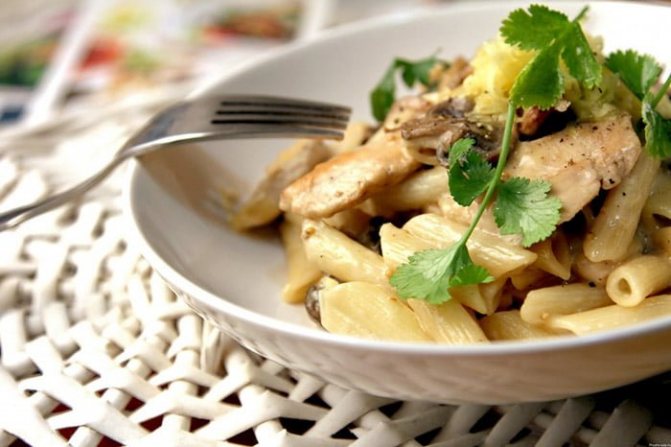
Dishes with cashews
Cashews are a unique type of nut that adds impeccable taste not only to desserts, but also to many other dishes. The variety of recipes surprises nursing mothers, because they understand the opportunity to diversify their diet with light and tasty dishes.
Ingredients:
- 200 grams of egg noodles;
- 200 grams of chicken breast;
- 5 tablespoons coconut milk;
- 5 cashews.
Coconut milk is considered one of the healthiest for nursing mothers and infants. For this reason, such a second course will be appreciated by many young women.
At the very beginning, boil the egg noodles and chop the cashews. Chicken breast is finely chopped and fried in vegetable oil. A few minutes before readiness, add the noodles and stir. Then turn off the heat, add coconut milk and mix again. Before serving, sprinkle the dish with nuts.
Ingredients:
- one green apple;
- one banana;
- 500 milliliters of vegetable or meat broth;
- green onion stalk;
- 50 grams of cashews;
- 40 grams of butter;
- a pinch of ground ginger.
Green apple, banana, onion finely chopped. The ingredients are mixed, seasoned with salt and ground ginger, and simmered in butter for about five minutes. Stewed fruits with green onions are added to the broth and cooked for 15 - 20 minutes.
Then the whole mass is passed through a blender or thoroughly kneaded with a spoon. The finished dish is sprinkled with chopped cashews.
Ingredients:
- four stalks of celery;
- one carrot;
- green apple;
- 100 grams of raisins;
- 100 grams of cashews;
- juice of half a lemon and a little olive oil for dressing.
This salad surprises with its impeccable taste and maximum benefits.
At the very beginning, the carrots are peeled and grated. Celery stalks are washed, excess leaves and dark upper and lower parts are cut off, cut into slices. The apple is chopped into cubes. To prepare the salad, mix celery, carrots, raisins, and cashews. For dressing, add lemon juice and olive oil. All components are mixed. Bon appetit!
Rice dessert
Ingredients:
- 150 grams of rice;
- 50 grams of cashews;
- 50 grams of raisins;
- 300 milliliters coconut milk;
- 2 tablespoons sugar.
Rice is cooked until half cooked. Cashews, raisins and a pinch of salt are added to it, coconut milk is poured in. All ingredients are thoroughly mixed. Cook the rice over low heat, covered, until the dish becomes viscous. Rice reveals its flavor best when warm.
The above recipes deserve special attention. By choosing such delicious and healthy dishes, you can be sure that even after the baby is born, many delicacies are still available.
Cashews are one of the healthiest and most delicious nuts, which are successfully used for various culinary purposes. Proper use of cashews helps to add benefits and variety to the menu.
Is it possible to have nuts and dried fruits during breastfeeding – which ones and how much?
You can eat nuts and dried fruits while breastfeeding, but you need to introduce such ingredients into your diet gradually. In this case, it is necessary to monitor the behavior of the newborn, and if unusual reactions occur, discontinue the product.
Some nuts during breastfeeding can cause allergies, so their consumption should be moderate. You should not eat these foods if:
- Mom previously had an allergic reaction to them;
- after childbirth, a skin rash of unknown origin appeared;
- The baby has a tendency to allergic manifestations.
Among the safest nuts are walnuts and cashews.
Contraindications

- acute forms of gastritis;
- enterocolitis;
- cholelithiasis;
- individual intolerance;
- stomach and duodenal ulcers;
- various dermatitis.
Important!
Overweight women should limit themselves to a few kernels, as the nut is very high in calories.
Nuts during breastfeeding in the first month
You can eat a little bit of nuts during the first month of breastfeeding. They must be introduced into the diet in the first half of the day. This scheme is needed so that you can monitor the baby’s reaction until the evening. On the first day, you are allowed to consume no more than a quarter of a walnut. If the child does not react in any way, then after a day it is permissible to eat twice as much - half the kernel. By gradually increasing the portion, the volume of walnuts in the first month of breastfeeding is brought to 4-5 pieces per day.
The next type that can be introduced into your mother’s diet is cashew nut. According to a similar scheme, on the first day half of the nut is consumed before lunch, and at the end the portion reaches 6-8 grains. In the future, you can diversify the nut menu with varieties: macadamia, pistachio, Brazil nut, pine. A child may be allergic to nuts such as hazelnuts, almonds and peanuts.
Nuts do affect the quality characteristics of breast milk, but not its quantity. Lactation can only be enhanced by frequent breastfeeding, drinking plenty of fluids and eating well. But nuts increase the fat content of milk, fill it with important amino acids, vitamins and complex proteins.
How to introduce into the diet: step-by-step instructions
Experts do not prohibit eating vegetables during lactation, but advise not to forget about precautions. Many women wonder: how to gradually introduce radishes into their diet so as not to harm the baby? It is recommended to adhere to the following scheme:
Start with half a medium vegetable or one small one. Wait 2-3 days to make sure that the baby is not allergic to the new product
It is important to understand that a negative reaction can appear either immediately or after three days. To avoid confusion, it is recommended to keep a food diary
In this case, if you notice an allergy, you can check your notes and understand what food should be removed from the menu. If the baby feels well, you can add another 20-30 g of radish to your salad. After a month, you can start eating the vegetable twice a week, 2-3 pieces, combining it with tomatoes, cucumbers and lettuce. Low-fat sour cream, corn or olive oil are good for dressing.
Dried fruits during breastfeeding in the first month
Dried fruits will be an excellent alternative to sweets during breastfeeding. They should be introduced into the diet alternately, consumed in the first half of the day. It is recommended to add them to the menu in the following order:
- dates – enhance the production of oxytocin, thereby increasing the amount of milk;
- raisins – organizes proper metabolism, energizes;
- prunes – regulates intestinal function, cleanses the body;
- dried apricots – improves kidney function, relieves postpartum swelling.
Dried fruit compote – benefits for lactation and more
Compote made from dried fruits can be consumed by a nursing mother. The drink, in addition to its pleasant taste and quenching thirst, has a positive effect on the body:
- prevents constipation and bloating, improves motor skills;
- increases immunity;
- increases the amount of breast milk;
- strengthens system organs.
The process of preparing the drink is simple. It is necessary to take dried fruits (apples, dried apricots, pears, raisins or others), rinse and add water. Boil the compote for half an hour, then add sugar at the rate of: a third of a glass per 200 grams of fruit. Mix thoroughly and leave on low heat for 5 minutes.

